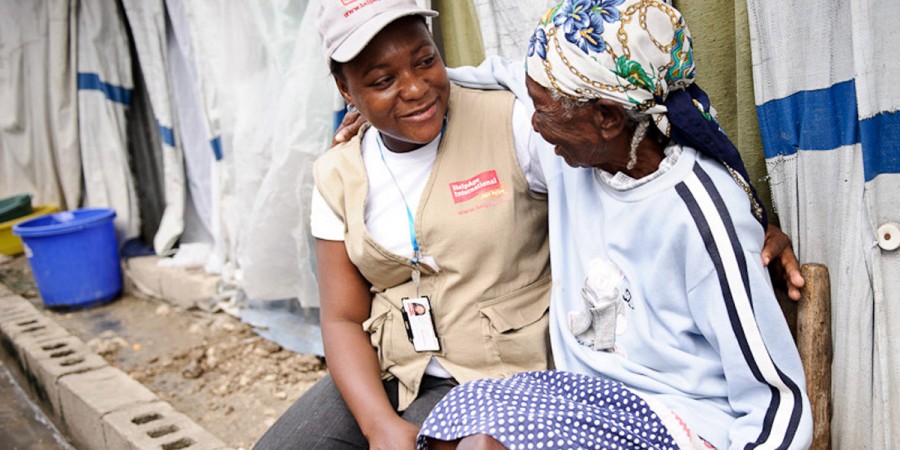Today, about 12% of the world’s population is aged 60 or over. By 2050, there will be 2 billion older people – more than one-fifth of the global population will be over 60. Two-thirds of older people live in developing countries, where disasters are more frequent and the humanitarian impact is greater. By 2050, four-fifths of the world’s older people are projected to live in developing countries.
These changes demand that humanitarian assistance and disaster risk reduction activities are adapted to the specific needs and capacities of older people. The World Humanitarian Summit (WHS) offers an opportunity to highlight the inadequacy of current response for older people, and commit to the bold changes needed address this challenge.
Current humanitarian response is inadequate
Currently, basic steps necessary to delivery ageing-sensitive responses, such as the collection of age-disaggregated data are not completed. HelpAge International 2012 research also shows a significant shortfall in humanitarian financing – just 2.1% of analysed projects included at least one activity targeting older people, and just 1% were funded. Finally, humanitarian capacity to assess and address the needs of older people remains highly constrained.
Why and how are older people at risk in emergencies?
Available data shows why changes are needed. Older people are disproportionately affected by disasters, for example, 75% of those who died in Hurricane Katrina were over 60, even though this age group comprised only 16% of the local population. In addition, older people’s pre-crisis status places them at considerable risk. They are often among the poorest members of a community reducing their access to basic goods and services, and undermining their survival during, and recovery after, a crisis.
The shift to nuclear families, and the breakdown of socio-cultural values and family/community support during a crisis often means that, contrary to common assumptions, older people are not always cared for by their family or community. When resources are scarce, older people may face exclusion or basic care may be too much of a burden for existing coping mechanisms. Finally, in a crisis older people with physical and sensory disabilities or poor health are even more vulnerable as their usual support structures are disrupted, hindering access to goods and services.
Specific areas of concern for older populations in emergencies
Compounding the underlying risks faced by older people are the significant challenges they face in accessing assistance that is appropriate to their needs. By 2020, non-communicable diseases (NCDs) are expected to account for seven out of ten deaths in developing regions. NCDs disproportionately affect older people and when treatment for common conditions such as hypertension and diabetes is interrupted, the consequences are often debilitating, and can be fatal. However, appropriate treatment options from emergency health actors are minimal.
Furthermore, in disasters older people are at risk of malnutrition due to factors including inaccessible food distributions, hard-to-digest foods or simply due to poverty or disability. Yet, experience shows that older people are systematically excluded from emergency nutrition assessments and hence there are few nutrition interventions that address their needs.
Delivering appropriate humanitarian response in an ageing world
The humanitarian system has been slow to recognise and respond to the consequences of global ageing. Policy analysis shows an increasing awareness of ageing, and some notable initiatives including ECHO’s Gender and Age Marker the integration of age into the IASC Gender Marker and policy commitments made by DFID and USAID.
It is critical that such good practice is replicated by other humanitarian donors. However, the WHS must go further and support the humanitarian community to understand and commit to the changes needed to deliver a response that is truly accessible and appropriate for older men and women.
Key recommendations
- Reforms to the humanitarian system must provide profile for and represent the growing numbers and needs of currently marginalised older people. A UN Convention on the Rights of Older People should form a central element of Member State commitment to this endeavour.
- Cluster-led agencies and humanitarian actors at national and international level must support and ensure the delivery of programmes that address the different needs of all population groups across all sectors of response.
- Current humanitarian capacity to prepare, assess and respond to the needs of older men and women must be strengthened, and operational agencies must be held accountable for this.
- Donor initiatives that support inclusion of ageing in humanitarian response should be commended and expanded. Such efforts must be matched with a tracking of funding and ring-fencing where necessary.
- Quality demographic and socioeconomic data on older people’s needs must be collected and used to inform the design and implementation of appropriate and accessible programmes.
For more in-depth analysis and recommendations download HelpAge International’s WHS submission: Why ageing should be a concern for the World Humanitarian Summit (2.5MB).
For more facts and figures see HelpAge International’s infographic Global population ageing and humanitarian action.


Comments